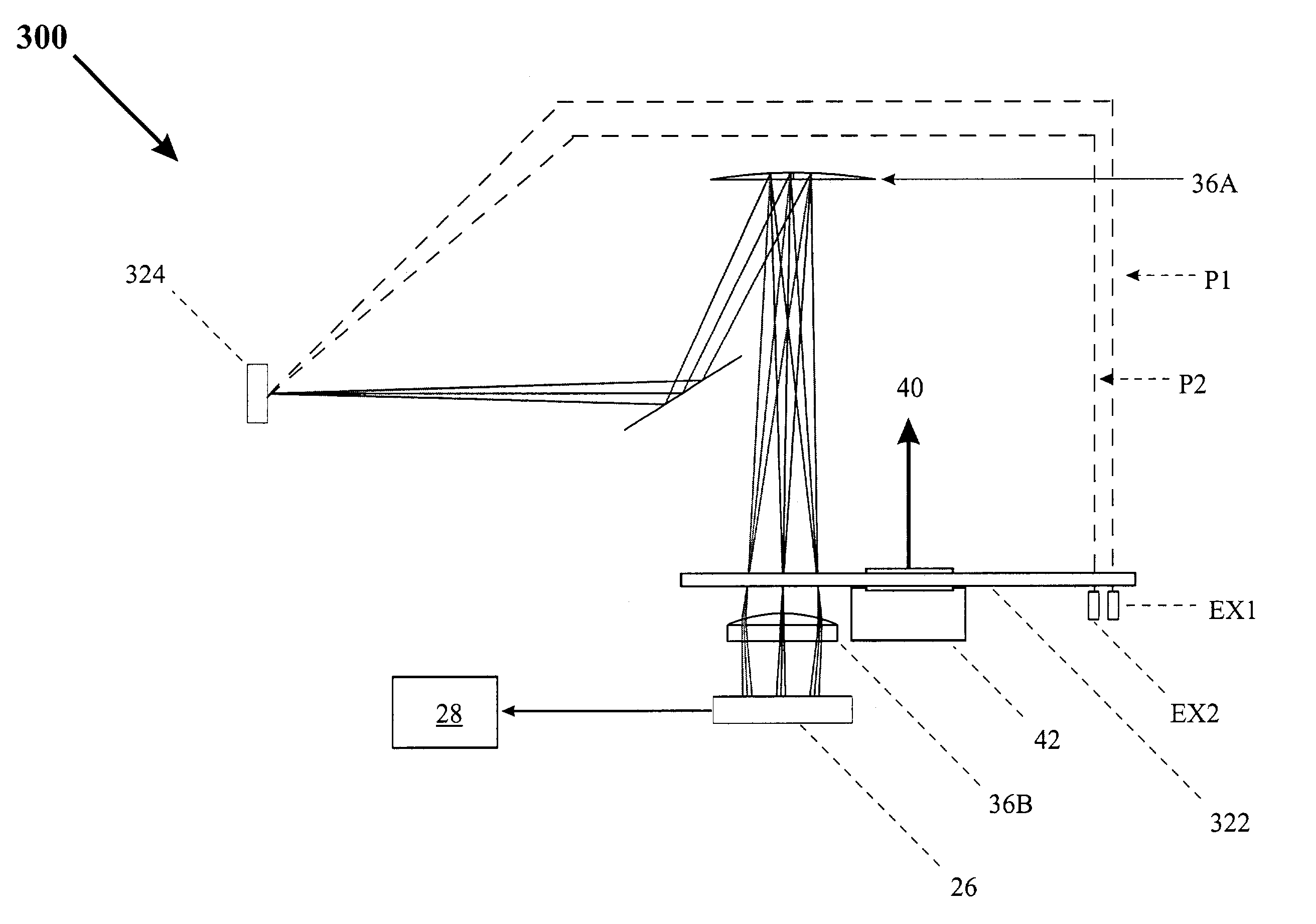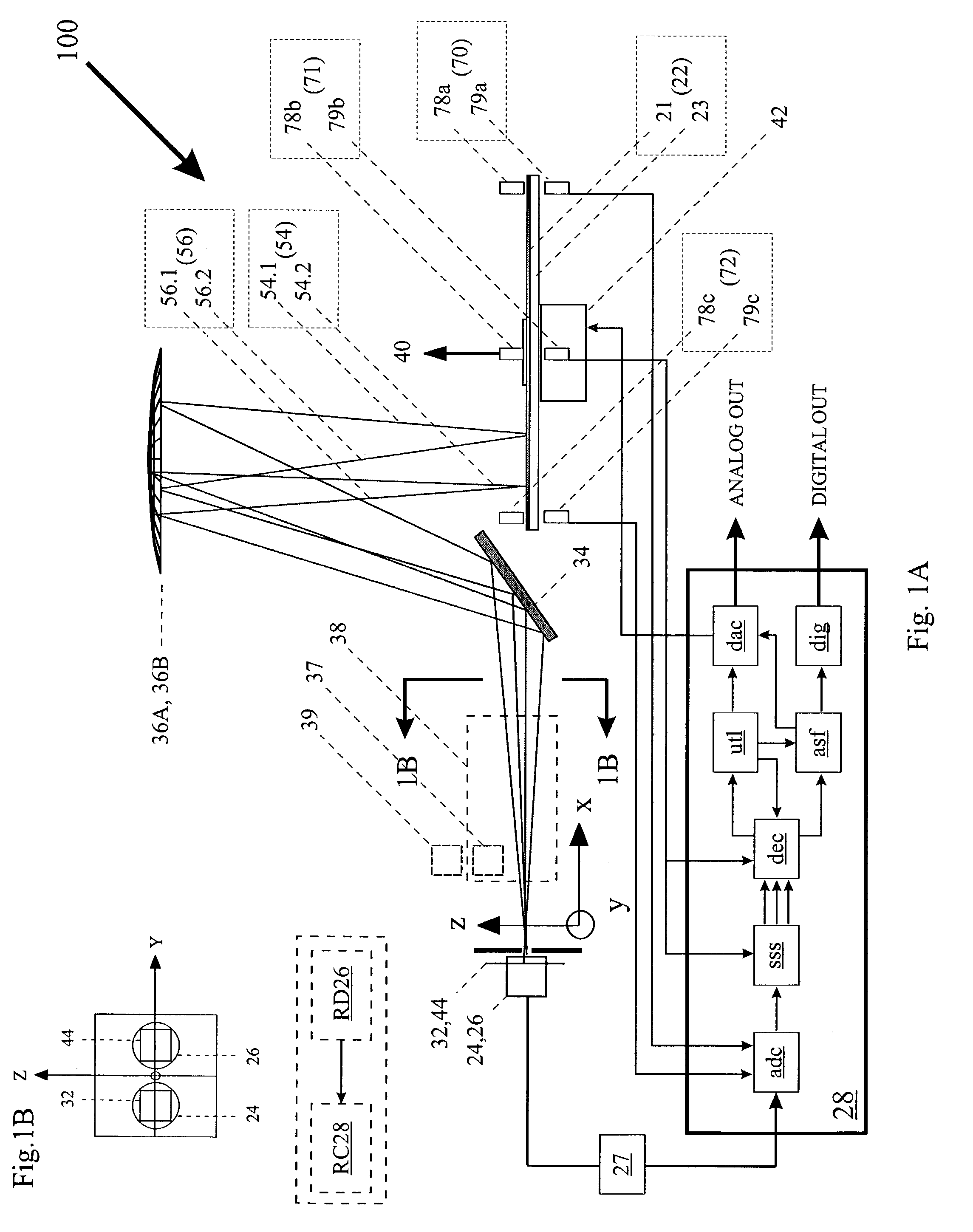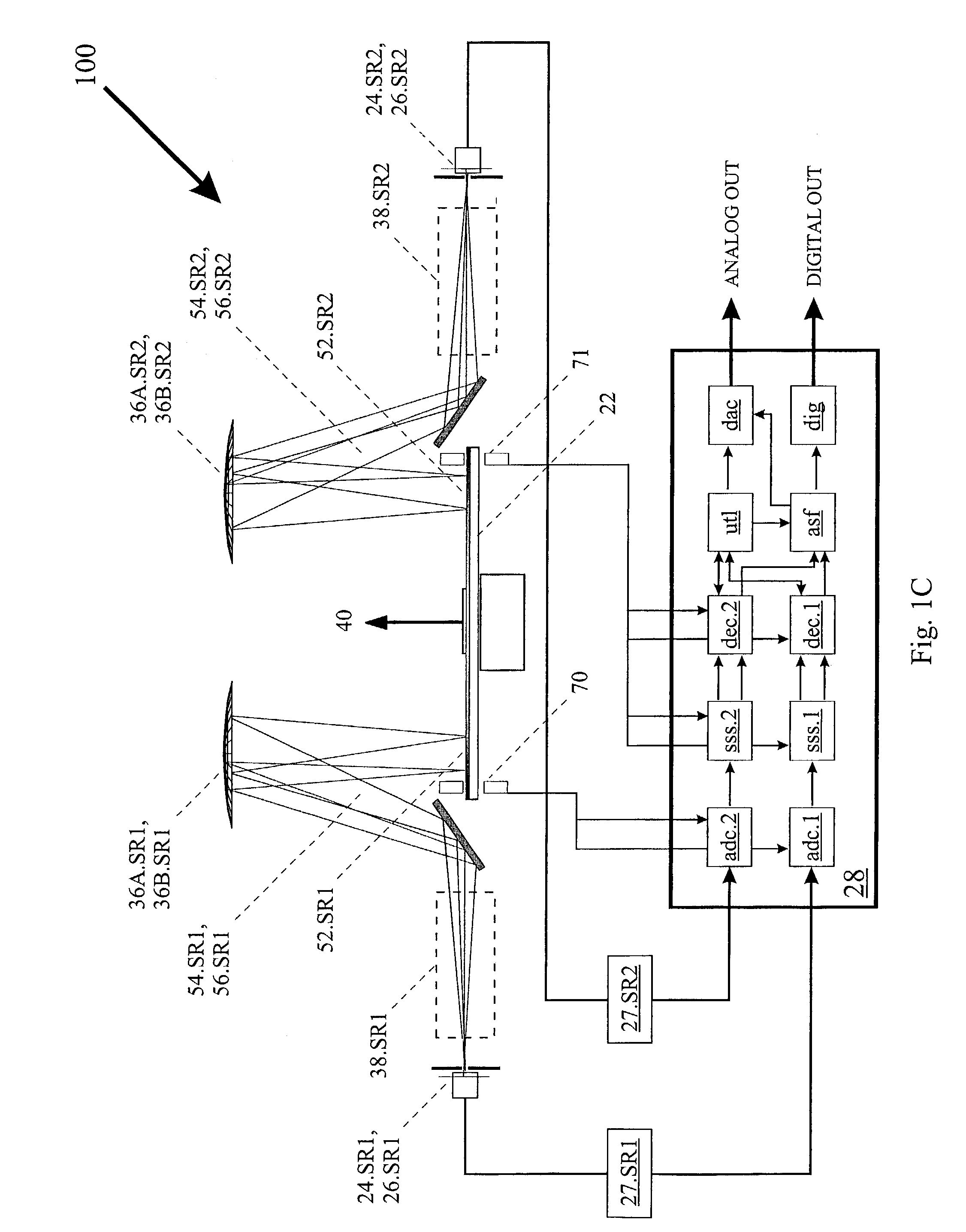Method and apparatus for radiation encoding and analysis
- Summary
- Abstract
- Description
- Claims
- Application Information
AI Technical Summary
Benefits of technology
Problems solved by technology
Method used
Image
Examples
example 1
[0301]The first example of the multi-purpose analyzer 100 depicted in FIG. 1A, analyzer 100.1, is a multi-spectral-component encoded source with a high-intensity, collimated beam, which is used to measure radiation absorbing gasses and vapors in one or more long, open paths, such as gasses and vapors in FIG. 1A at 38 where the gasses and vapors are not confined by any enclosure. Examples of long, open paths include the atmosphere, the restricted air space between microwave transceivers, the line of sight between buildings or highway overpasses, between remote objects on the battlefield, and along the perimeter of a military compound or industrial facility. Radiation source 24.1 is a collimated radiation beam having a plurality of selected spectral components (e.g., a carbon dioxide laser). Pre-encoder optic 36A.1 includes at least one diffractive or refractive element to separate the selected spectral components to form target image 52.1 along a radial axis of modulator 22.1. Prefer...
example 2
[0306]The second example of the multi-purpose analyzer 100 depicted in FIG. 1A, analyzer 100.2, is a compact spectrum analyzer which uses a collection of bandpass filters or a linear variable filter (LVF) to provide a plurality of selected radiation components. In analyzer 100.2, the radiation source comprises a broad band or multi-wavelength source filtered by a linear array of two or more bandpass filters (or a linear array of two or more correlation radiometry filters; e.g., a collection of physical gas or liquid samples) or a linear variable filter (LVF). Taken together the radiation source and the collection of bandpass filters or LVF comprise extended source 24.2, having a number of spatial components corresponding to the radiation transmitted through (or reflected from) the individual bandpass filters or specific positions along the LVF. The radiation filtered by the array of bandpass filters or LVF is imaged by pre-encoder optic 36A.2 to form target image 52.2 substantially ...
example 3
[0308]The third example of the multi-purpose analyzer 100 depicted in FIG. 1A, analyzer 100.3, is a spectrum analyzer, which is used for both analyzing and providing feedback to simultaneously control the center wavelengths of a number of tunable radiation sources. Radiation source 24.3 comprises a plurality of spectral components, where each spectral component corresponds to a distinct radiation source and is characterized by an intensity and a center wavelength. For example, radiation source 24.3 may be an optical fiber containing a plurality of optical signals, where each signal corresponds to a different radiation source. Radiation emitted by source 24.3 is imaged by pre-encoder optic 36A.3 to form a target image 52.3 onto modulator 22.3. Target image 52.3 comprises a plurality of sub-images focused at substantially different points along a radial axis of modulator 22.3, where each sub-image corresponds to a distinct radiation source. Pre-encoder optic 36A.3 comprises at least o...
PUM
 Login to View More
Login to View More Abstract
Description
Claims
Application Information
 Login to View More
Login to View More - R&D
- Intellectual Property
- Life Sciences
- Materials
- Tech Scout
- Unparalleled Data Quality
- Higher Quality Content
- 60% Fewer Hallucinations
Browse by: Latest US Patents, China's latest patents, Technical Efficacy Thesaurus, Application Domain, Technology Topic, Popular Technical Reports.
© 2025 PatSnap. All rights reserved.Legal|Privacy policy|Modern Slavery Act Transparency Statement|Sitemap|About US| Contact US: help@patsnap.com



